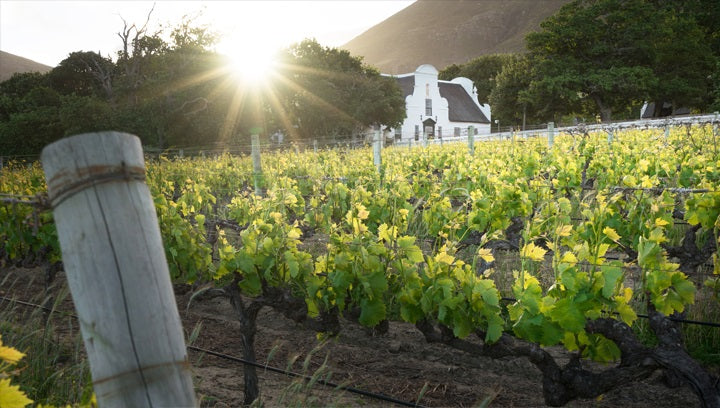
1991: A Year of Change in South Africa
The year 1991 was a watershed moment in South African history. The country was on the cusp of profound transformation, with the dismantling of apartheid laws and the first steps toward a free democracy. While hope and optimism for a new era were palpable, there was also deep uncertainty and fear of the unknown, as political violence and social upheaval continued to affect many communities. Against this backdrop, my friends and I, then students on summer vacation in Cape Town—the Mother City—were determined to make the most of our break, even as the winds of change touched our lives.
First Encounter with Groot Constantia
It was during this time that I first visited Groot Constantia, South Africa’s oldest wine-producing farm, founded in 1685 by Simon van der Stel. The estate struck me as a place of exceptional beauty: a working farm, yet also a living museum, approachable and open to all. We wandered the grounds, took a cellar tour, and enjoyed a tasting. I distinctly remember sampling a port-style wine and being told that this would soon change—only Portuguese producers would be able to use the name “Port,” as international agreements were coming into effect to protect the designation. At the time, the winemaker was Bob de Villiers, and there was talk of the estate soon being placed into a nonprofit trust, a move that brought mixed emotions about the future.
The Estate’s Transition to a Nonprofit Trust
The transition of Groot Constantia to an NPO trust in 1993 was a significant milestone. This change meant that the estate would be managed not for private or governmental profit, but for the benefit of the public and the preservation of its cultural and historical legacy. The trust structure ensured that all surpluses would be reinvested into the estate’s upkeep and mission, safeguarding its heritage for future generations. Today, the trust remains the guardian of this national treasure, ensuring that Groot Constantia continues to thrive as both a working wine estate and a living museum.
A Personal Connection: From Student to Regular Visitor
After moving to Cape Town in 1994, Groot Constantia became a regular destination for me. I would bring my restaurant staff for basic wine training, appreciating the estate’s openness and educational spirit. Later, as my family grew, we made a tradition of breakfasts at Jonkershuis Restaurant, feeding the ducks by the pond, and enjoying the magic of Uncle Paul’s Christmas parties. Even during the challenges of the Covid-19 pandemic, the estate’s trails offered a welcome escape and a sense of continuity.
Meeting the Winemaker: Daniel Keulder
So when Carmen Lerm invited me to meet with Daniel Keulder, the current head winemaker, I happily said yes please! Daniel’s journey is deeply intertwined with the Constantia valley. As a young child he was captivated by the writing of Karl Kielblock he visited the valley with his family opening him to the idea earning his Master’s degree in Viticulture and Oenology from Stellenbosch University, he spent three years in the UK, where he realized that the routine of brewing was not his calling. Returning to South Africa, he worked in Lutzville before joining Groot Constantia as assistant winemaker in 2009. It was here that he met his wife and started a family, cementing his bond with the valley.
In 2014, Daniel accepted a head winemaker position in Durbanville, a move that was bittersweet but necessary for his career. However, the pull of Constantia remained strong, and in 2023, he returned to Groot Constantia as head winemaker. Daniel’s philosophy is rooted in respect for terroir and a hands-on approach: he believes that the land should dictate the wine, rather than chasing trends or critics’ preferences. Emphasizing the importance of being present and attentive in the vineyard and cellar he spends a great deal of time walking the hills and valleys meeting with Flo Beukes(viticulturist) regularly .
The Tasting Experience: Wines of Groot Constantia
Our visit began with a cappuccino at Jonkershuis, a welcoming atmosphere, set amidst the estate’s historic buildings and ancient oaks . We discussed the value of formative tasting experiences—how discovering wine for oneself is more meaningful than being told what to expect.
Daniel soon joined us, and we moved to the tasting hall, which was once part of the estate’s museum. The duck ponds outside were being cleaned—a reminder that even the most picturesque settings require care and stewardship.
Sauvignon Blanc (2025 Vintage)
The Constantia valley is increasingly recognized for its Sauvignon Blanc and Semillon. The 2025 Sauvignon Blanc we tasted was delicate, rounded, and quite fruity, yet not sweet—a testament to the valley’s cool climate, wet winters, and unique soils . The wine was fresh and vibrant, with notes of citrus, green apple, and tropical fruit, underpinned by crisp acidity.
Lady of Abundance
The Lady of Abundance is not a blend of leftovers, but rather a thoughtful combination of the estate’s red varietals, reflecting an alternative perspective on each year’s harvest. The 2021 vintage, is a complex blend of Pinotage, Merlot, Cabernet Franc, Cabernet Sauvignon, Grenache, and Petit Verdot. The wine is layered and approachable, with aromas of ripe black fruits, mocha chocolate, vanilla, and wood spice. On the palate, it is rich and smooth, with fine tannins and great length—an easy drinker with Cabernet-like character and a touch of minerality. I would pair it with rich duck and balsamic tomatoes.
Pinotage
Groot Constantia’s Pinotage, often a component in blends, is reminiscent of a fine Pinot Noir, with notes of tomato leaf, iron, and sweet oak. The style is elegant, with ripe berry fruit and subtle meaty undertones.
Merlot
The Merlot stands out as a varietal wine, defying the notion that it should only be used in blends. It delivers mocha notes, tobacco, rich plums, and dark fruits, with soft tannins and a smooth, approachable palate a rich delight.
Shiraz
The Shiraz (Syrah) is fresh and vibrant, offering notes of mulberry and dark berries, soft acidity, and hints of smoke. It is plush and fruit-driven.
Gouverneurs Reserve
The Gouverneurs Reserve is Groot Constantia’s flagship Bordeaux-style blend, known for its structure, depth, and aging potential. It evokes the richness of a Black Forest chocolate cake with a cheeky cherry liqueur, grounded by earthy tones that root the wine firmly in the estate’s terroir.
Grand Constance
We ended the tasting with the Grand Constance, a wine that brings the estate’s history to life. Groot Constantia is unique in farming both red and white varietals, and its Muscat—amber in the glass—offers aromatic, floral, and grapey notes. The taste and texture are truly inimitable, evoking the esteemed legacy of the renowned ‘Constantia Wyn’. As Napoleon’s favourite and South Africa’s oldest wine, it represents a seamless bridge to the past
The Enduring Magic of Groot Constantia
Every visit to Groot Constantia is a reminder of humanity’s ability to work in harmony with nature, reaping the land’s bounty while leaving a positive legacy. Whether enjoying a meal at Jonkershuis, exploring the estate’s historic buildings, or simply walking the vineyards, the experience is always one of appreciation and wonder.
And for those who wonder about the estate’s future, rest assured: the Groot Constantia trust remains the steadfast guardian of this national heritage site, ensuring that its story—and its wines—will continue to inspire for generations to come.
Thanks once more to Carmen Lerm for an afternoon well spent!

